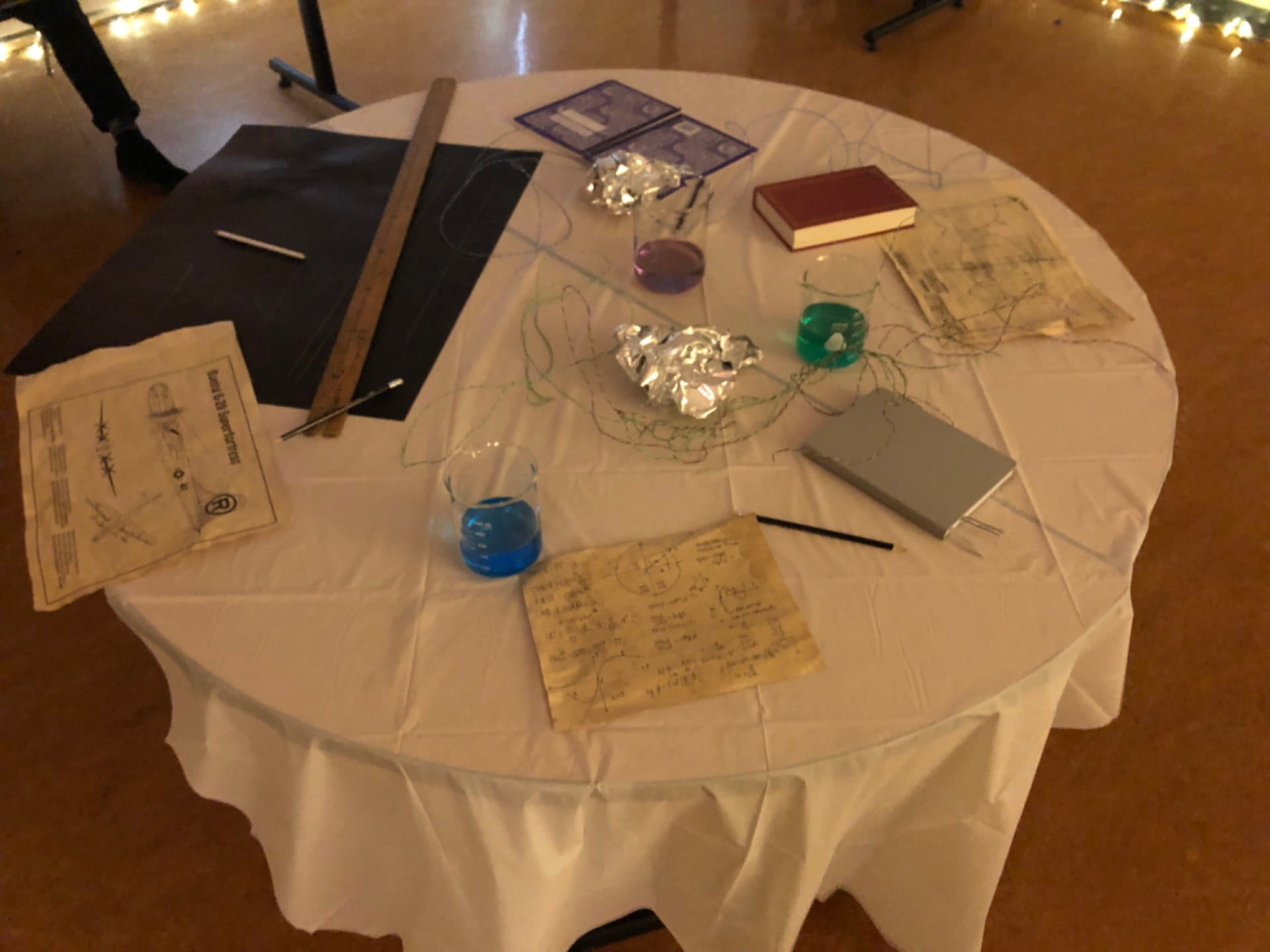An Atomic Medium – The Manhattan Project²
To end off the new year, PLP conducted their first winter exhibition since 2019. Over the last couple months, we explored three areas of focus where in the end, we would eventually create our own conceptual art focused on the lasting impacts the world’s first atomic bomb and it’s creation had on the world. First, was conceptual art – where we first discussed in class and saw in person on a field study. Secondly, was analyzing the term “historical significance” – through a blog post that we wrote as a project milestone. Lastly, the infamous Manhattan Project– where we learned lots about in class lectures.
“How did the development of the atomic bomb change the world?” – Driving question
After gathering up the key knowledge essential to this project, we then went on to start creating our final products. Our class was separated into 4 different groups; Society and Culture, Science and Tech, Politics and Warfare, and Morals, Ethics and Philosophy. This is how we would be separated on the night of the exhibition, where each group would display their art in their group’s assigned room. I was in the Science and Tech group with Jordyn, Alexee, Liam, Kaden, Matthew and Brenton.
When it came to setting up our room for the exhibition, teamwork was extremely important. The two hours we had to set up passed by a lot faster than we perceived, and during the moments leading up to the exhibition, our room seemed to not be working out due to set up and audio/visual issues. But in the end, we pulled through and managed to make our room look much better than we originally expected.
As I was in the “Science and Tech” group, my final product had to be connected to this category. Given my interest in pursuing a career in the medical field, I decided to focus my concept on how the Manhattan project ultimately provided break throughs in this field. I made my concept on the discovery of radiation being able to not only cause, but treat cancer. This of which was discovered through the ramifications of those who were affected by the atomic bomb in Hiroshima and Nagasaki. I felt like this was a more unique approach, since it was making something positive out of something so negative. If you’d like to hear more, click the accordion bellow to see my artist statement.
My primary motivation when it comes to my art piece is my personal point of view on the research behind the atomic bomb—that it is conflicting with two different “sides”. It’s about the fact that, the atomic bomb—something so dangerous and deadly, has also lead to technological advances that have ultimately helped save lives. By choosing to base my art piece on a positive outcome that came from the research behind the atomic bomb, I desire to have the viewer spark the same thoughts after coming to understand the meaning behind my art piece.
I decided to have my art represent radiation therapy in an interactive way, as well as with the materials I chose, because I feel as though it is the best way to represent both the concept that I am choosing to depict, as well as the reaction I intend to provoke the viewers with.
As you approach my art piece, I will ask you to remove part of this mannequin’s hair, as a representation of something that those suffering from this terrible disease tend to go through—losing their hair. Cancer has, without a doubt, impacted many people’s friends, loved ones, or even themselves. I want people through my art piece to feel this conflict between this good and bad – radiation therapy – the bad you lose your hair – the good it has proven to cure or diminish cancer.
Before the night of the exhibition, I was already unsure about how I was representing my idea, and how it would come off to other people. I realized that my art had the potential to bring up sensitive past or present experiences, and my suspicions were confirmed especially with two people who came and saw my art. One going through radiation therapy, and another who’s dad passed away after going through radiation therapy a few times.  In the end, I was still happy with my idea, but if I were to do it again, I would most certainly change the way I represented it. However, representing something such as devastating as cancer can be quite challenging to not unsettle others who were closely affected by it.
In the end, I was still happy with my idea, but if I were to do it again, I would most certainly change the way I represented it. However, representing something such as devastating as cancer can be quite challenging to not unsettle others who were closely affected by it.
We also completed a new area of writing skills, specifically Text Analysis in conjunction with reading the novel “Hiroshima”. We wrote three response journals, an in-class theme analysis and finally, a critical summary. I had never written a critical summary before, but I found it quite interesting to look at a novel in a different way and force myself to think about the underlining meaning in each page, word and sentence. In the end although difficult, the final critical summary in my humble opinion turned out quite well. You can click here to see my critical summary blog post.
before, but I found it quite interesting to look at a novel in a different way and force myself to think about the underlining meaning in each page, word and sentence. In the end although difficult, the final critical summary in my humble opinion turned out quite well. You can click here to see my critical summary blog post.
The other blog post we did in this project was on historical significance. For this assignment, we chose an event and needed to show specific evidence to convince others that this chosen event is historically significant. In giving me an even deeper understanding to the term historical significance, I believe that this assignment helped contribute to making my final product’s concept more refined – specifically showing the audience how the atomic bomb affected the world of Science and Technology.
I think that my conceptual art gave most people a different perspective on the discovery of atomic power. Which is what I felt was a big take away for me from this project – , that the splitting of the atom can and has been used for good. Those in Hiroshima and Nagasaki at the time had to suffer and nuclear bombs that could ultimately destroy the earth continue to be produced. However, believe it or not, due to the historical significance of this technology the world has also changed for good – impacting medicine, energy, agriculture, space science, engineering and more.




